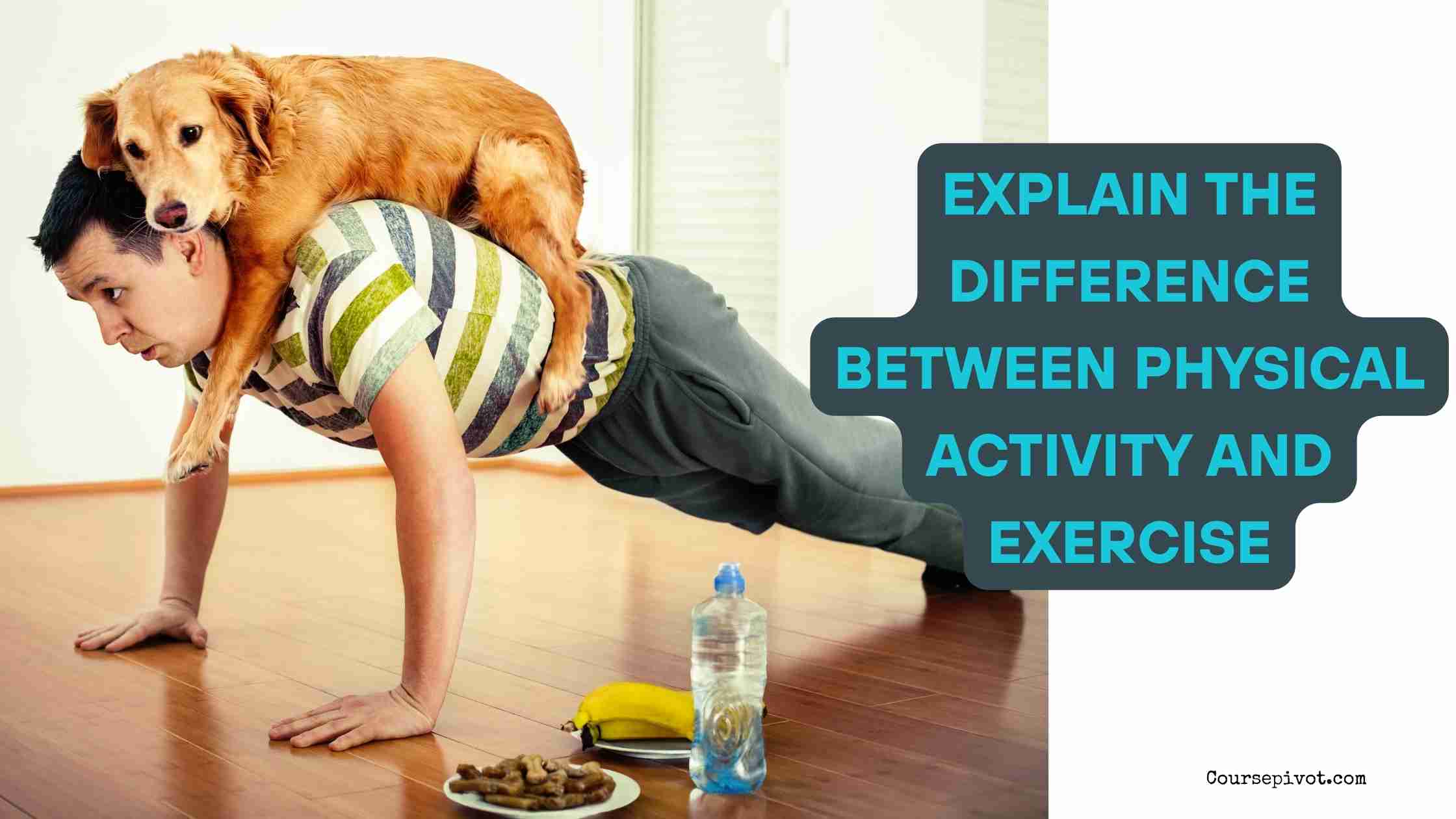
Explain the Difference Between Physical Activity and Exercise
You’ve probably heard the words physical activity and exercise used interchangeably. People often say “get more exercise” when what they might really mean is “move more.” But here’s the thing:
Physical activity and exercise are not the same.
While they’re closely related, understanding the difference between physical activity and exercise is essential—especially if you’re setting fitness goals, trying to lose weight, or simply aiming for a healthier lifestyle.
Table of Contents
Let’s break it down in a way that actually sticks.
🏃♀️ What Is Physical Activity?
Physical activity is any movement of your body that uses energy.
That means everything from walking to the mailbox, to playing catch with your dog, to scrubbing your kitchen floor counts as physical activity.
💡 Key characteristics of physical activity:
- It’s unstructured
- Can happen anytime, anywhere
- Includes daily movements that raise your heart rate
- Doesn’t require a routine or specific goal
Examples:
- Walking to the store
- Gardening
- Taking the stairs
- Playing with your kids
- Cleaning the house
In short: physical activity is about moving your body, whether it’s planned or not.
🏋️♂️ What Is Exercise?
Exercise is a structured, intentional, and repetitive form of physical activity with a specific purpose—usually to improve or maintain physical fitness.
Exercise is done with goals in mind like building strength, increasing endurance, losing weight, or improving flexibility.
💪 Key characteristics of exercise:
- Planned and purposeful
- Has fitness or health goals
- Often follows a routine or program
- Includes measurable intensity, duration, and frequency
Examples:
- Jogging for 30 minutes
- Lifting weights at the gym
- Doing a yoga class
- Following a home workout video
- Swimming laps at the pool
Exercise is physical activity—but not all physical activity is exercise.
- Read our article on Explain Three of the Seven Phases of the Impulse Purchase Cycle
📊 Quick Comparison: Physical Activity vs. Exercise
| Feature | Physical Activity | Exercise |
|---|---|---|
| Purpose | General movement, any energy output | Planned movement to improve health/fitness |
| Structure | Unstructured or spontaneous | Structured and repetitive |
| Setting | Anywhere (home, work, park) | Often in a gym or specific workout space |
| Examples | Walking, cleaning, playing, chores | Running, lifting weights, HIIT, Pilates |
| Goal | Movement | Fitness improvement or performance goals |
🧠 Why the Difference Matters
Understanding this difference can redefine your relationship with fitness.
If you feel intimidated by the word “exercise,” that’s okay. You can start by simply increasing your physical activity. It’s just as important and often more accessible. Moving more throughout your day improves your health—even if you’re not hitting the gym.
On the flip side, if you have specific goals like building muscle or training for a 5K, then exercise—structured and intentional—is what will get you there.
Both are important. One isn’t better than the other—they serve different purposes and can (and should) complement each other.
Summary; Where is the difference?
So, what’s the difference between physical activity and exercise?
- Physical activity is any body movement that uses energy, whether you’re vacuuming, dancing, or walking to the mailbox.
- Exercise, on the other hand, is structured movement done with intention and purpose—like lifting weights or going for a run.
All exercise is physical activity, but not all physical activity is exercise.
If you move your body, you’re already doing something right. Whether it’s casual or calculated, just keep moving—your health depends on it.
Cite this article
You can copy and paste your preferred citation format below.
Martin, L. & Arquette, E.. (2025, May 23). Explain the Difference Between Physical Activity and Exercise. Coursepivot.com. https://coursepivot.com/blog/explain-the-difference-between-physical-activity-and-exercise/



